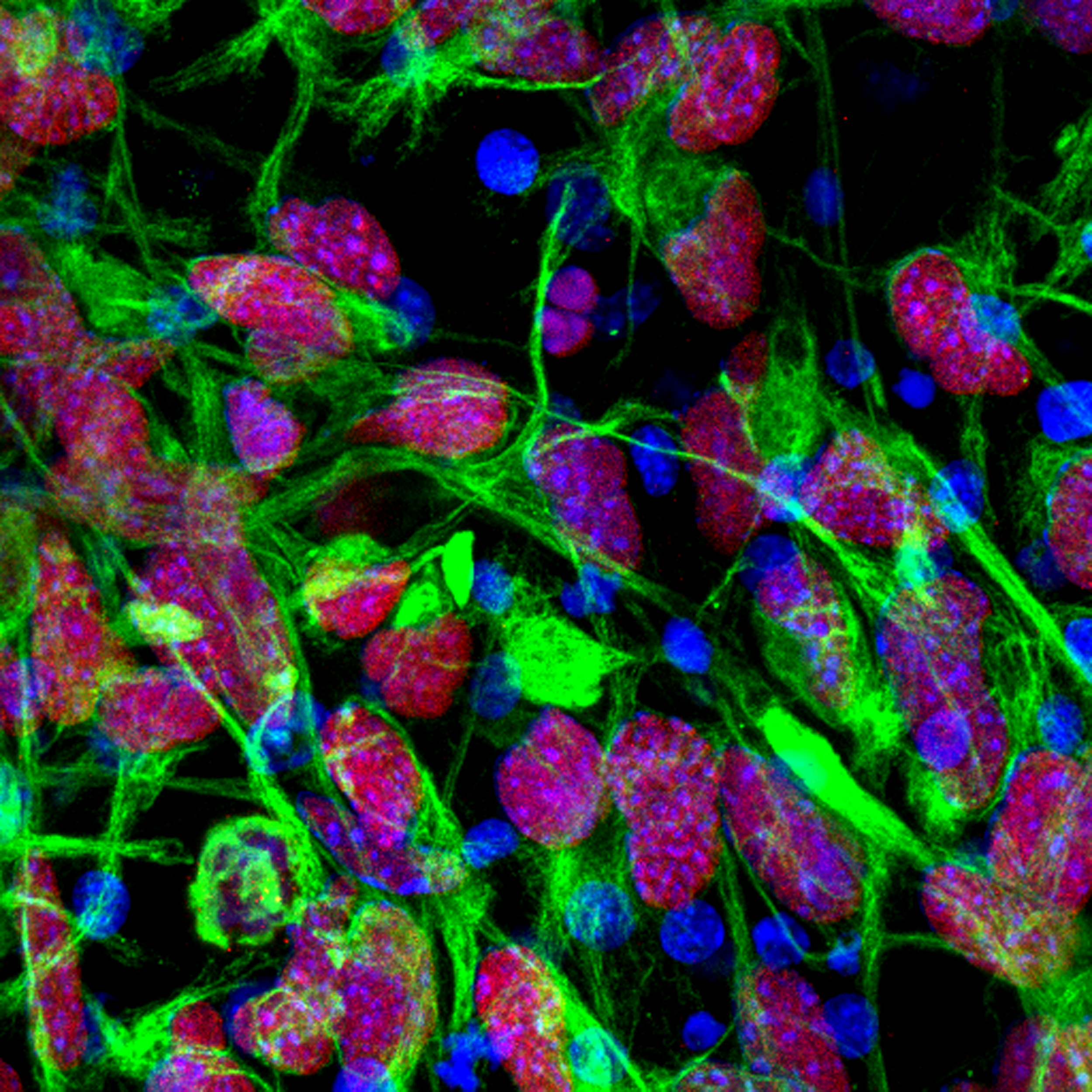Mechanically-Induced Dysfunction in Muscle Stem Cells
We are leveraging protein-engineered materials in combination with triggerable bioorthogonal chemistries to model changes in the mechanical microenvironment of muscle stem cells to identify how aberrant mechanotransduction can diminish muscle stem cell function during aging and in heritable muscular dystrophies.
Madl, et al. PNAS. 2024.
Madl, et al. Biomaterials. 2021.
Madl, et al. npj Regenerative Medicine. 2023.
Bioorthogonal Engineering of Cellular Microenvironments
We are exploring novel (bio)chemical approaches to selectively assemble and dynamically modulate the viscoelastic and biochemical properties of engineered protein hydrogels to mimic the microenvironmental changes occurring during development, aging, and disease.
Zhou, et al. Advanced Functional Materials. 2025
Madl and Heilshorn. Chemistry of Materials. 2019.
Madl, et al. Advanced Functional Materials. 2016.
Biophysical Regulation of Neurogenesis and Neurodegeneration
We are developing hydrogel materials with on-demand tuning of network dynamics and microstructure to determine how altered biophysical cues in aging and neurodegenerative diseases lead to neural stem cell dysfunction, impaired neurogenesis, and neurodegenerative disease.
Madl, et al. Nature Materials. 2017.
Madl, et al. Advanced Science. 2019.
Madl, et al. Advanced Healthcare Materials. 2020.
Organotypic Models with Dynamic Matrix Tuning
We are combining our engineered protein polymers and bioorthogonal chemical strategies with human-derived stem cells to generate organotypic cultures that model the dynamic and reciprocal relationship between cells and the extracellular matrix.
Madl. iScience. 2023.




